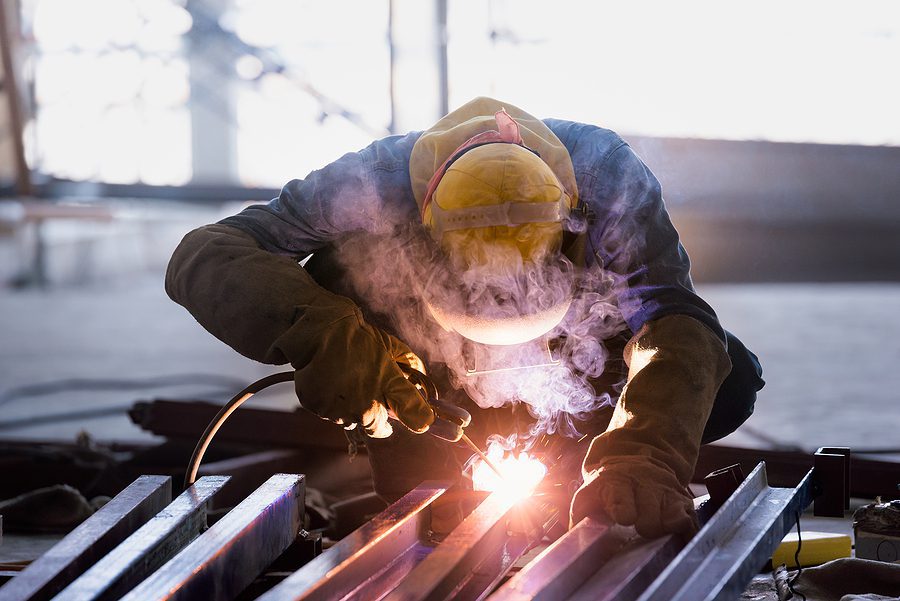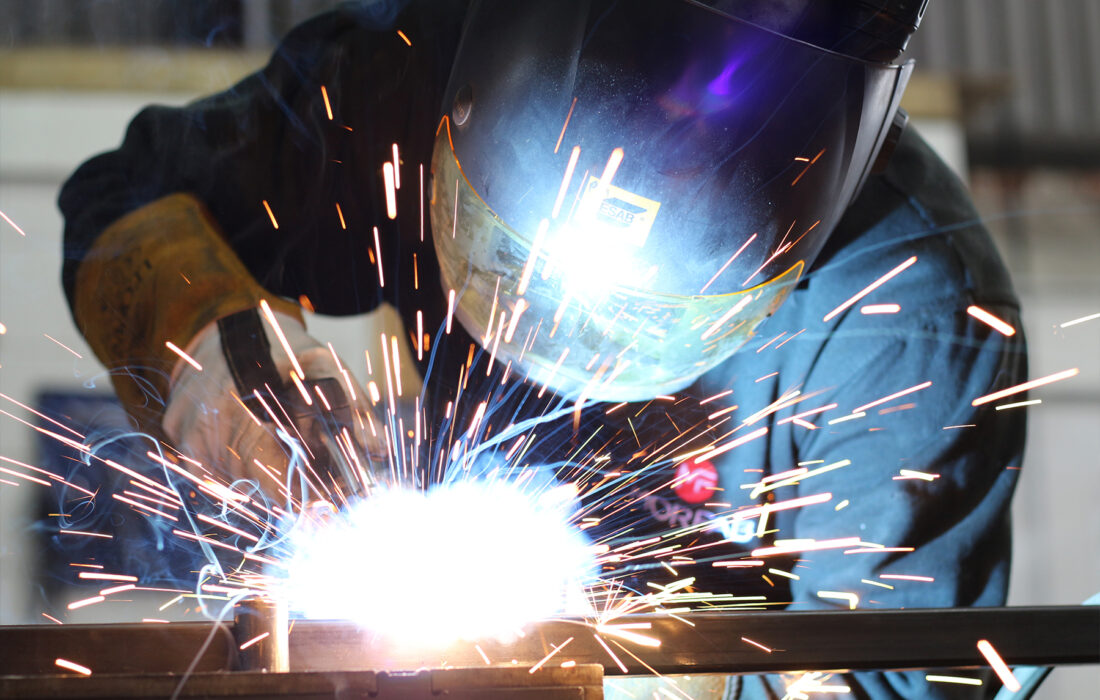Typical Welding Repair Issues and Exactly How to Address Them Efficiently
Welding repair work commonly come across a series of problems that can threaten the integrity of the last item. Usual troubles include inadequate infiltration, porosity, and misalignment, to name a few. Each problem provides special obstacles that need particular approaches for resolution. Recognizing these problems is important for welders aiming to enhance their results and abilities. This discussion will discover these typical welding fixing concerns and effective methods to resolve them.
Insufficient Infiltration
Poor penetration occurs when the weld steel fails to completely fuse with the base product, leading to weak joints and prospective architectural failings. This problem typically comes from not enough warm input, wrong electrode angle, or improper welding rate. Welders might encounter insufficient penetration because of a mistake of the required criteria for a details product thickness or kind. Furthermore, contamination on the base product's surface area can hinder efficient bonding, exacerbating the trouble. To address poor penetration, welders must ensure appropriate settings on their tools and maintain a tidy job surface area. Routine assessment of welds is recommended to recognize any type of deficiencies early, permitting for timely modifications and the avoidance of compromised structural honesty in welded assemblies.
Porosity
Porosity is a common defect in welded joints that shows up as little gas bubbles caught within the weld metal. This issue can endanger the honesty of the weld, resulting in decreased toughness and prospective failure under stress and anxiety. Belgrade Welding. Porosity commonly emerges from contamination, wetness, or improper welding methods, which permit gases to get away into the molten weld pool. To address porosity, welders ought to guarantee appropriate surface prep work, preserve a tidy working setting, and make use of suitable welding specifications. Additionally, picking the right filler material and shielding gas can reduce gas entrapment. Normal evaluation and testing of welds can assist recognize porosity early, ensuring timely rehabilitative activities are taken, thereby maintaining the top quality and integrity of the welded framework
Misalignment
Imbalance in welding can develop from numerous variables, consisting of incorrect configuration and thermal development. Comprehending the origin is essential for reliable resolution. A number of improvement strategies are offered to straighten elements and assure architectural honesty.
Root causes of Misalignment
Welding imbalance often originates from a variety of underlying issues that can endanger architectural stability. One key reason is inappropriate fit-up of components prior to welding, which can lead to voids and unequal surfaces. Variants in thermal development during the welding process can also lead to distortion, specifically if the materials being joined have different coefficients of expansion. Furthermore, insufficient fixturing and securing may stop working to hold elements securely in place, resulting in movement throughout welding. Badly conserved devices, consisting of welding devices and devices, might present inconsistencies in the weld bead, additional adding to misalignment. Operator mistake, stemming from inadequate training or experience, can also play a considerable duty in creating misaligned welds.

Adjustment Strategies Available
Addressing imbalance properly needs a combination of rehabilitative methods tailored to the details concerns at hand. One typical method is the use of fixtures or jigs to hold elements in the right position during welding, guaranteeing consistent alignment. Furthermore, preheating the materials can help in reducing distortion and enhance fit-up. For substantial misalignment, mechanical adjustment techniques, such as utilizing hydraulic jacks or clamps, can be used to fix the position prior to welding. Post-weld heat treatment may additionally be necessary to eliminate tensions triggered by misalignment. Lastly, mindful examination and modification throughout the setup phase can prevent misalignment issues from ending up being significant issues, promoting a smoother welding process and improving total architectural stability.
Distortion
Distortion is a typical challenge in welding that can arise from various variables, including irregular cooling and heating. Comprehending the reasons of distortion is crucial for executing reliable prevention strategies. Addressing this concern not only improves architectural stability but also enhances the total high quality of the weld.
Root causes of Distortion
When subjected to the intense warm of welding, products often undergo modifications that can lead to distortion. This phenomenon mostly occurs from thermal development and contraction throughout the welding procedure. As the weld area warms up, the product increases; upon cooling, it acquires, which can produce interior stresses. On top of that, irregular heating across a workpiece can intensify these stresses, causing warping or flexing. The sort of material likewise plays a substantial function; steels with varying thermal conductivity and coefficients of development may respond in different ways, bring about unforeseeable distortions. Moreover, poor joint layout and poor fixturing can add to misalignment during welding, boosting the probability of distortion. Recognizing these causes is vital for effective welding repair and prevention strategies.
Prevention Techniques
Effective next prevention strategies for distortion during welding concentrate on regulating warmth input and making certain appropriate joint layout. Maintaining a constant warm input assists to reduce thermal development and contraction, which can cause distortion. Utilizing strategies such as pre-heating the work surface can additionally lower the temperature level gradient, promoting consistent home heating. In addition, selecting appropriate joint layouts, such as T-joints or lap joints, can enhance security and minimize stress and anxiety focus. Applying proper fixturing to safeguard the workpieces in position further help in maintaining positioning throughout the welding process. Ultimately, staggered welding sequences can distribute warm extra evenly, stopping local distortion. By applying these strategies, welders can considerably decrease the possibility of distortion and boost the general high quality of their welds.
Fracturing
Breaking is a common problem come across in welding repairs, frequently arising from different variables such as improper cooling prices, product option, or poor joint preparation. The incident of cracks can substantially jeopardize the integrity of the weld, resulting in possible failings during operation. To resolve this problem, welders must initially evaluate the origin, making sure that products are suitable and properly picked for the certain application. In addition, regulating the cooling rate throughout the welding procedure is crucial; fast air conditioning can induce anxiety and result in fracturing. Correct joint layout and preparation likewise add to minimizing the risk. Implementing these methods can improve weld quality and durability, inevitably reducing the chance of fracturing in finished weldments.

Insufficient Combination
A significant issue in welding repair work is incomplete blend, which happens when the weld steel does not sufficiently bond with the base material or previous weld passes - Montana Mobile Welding and Repair Belgrade. This defect can cause weak points in the joint, potentially jeopardizing the stability of the bonded structure. Variables contributing to insufficient combination include insufficient warmth input, inappropriate welding strategy, and contamination of the surfaces being joined. To address this issue successfully, welders ought to assure proper pre-weld cleansing and surface preparation, in addition to change their welding criteria to accomplish ample infiltration and blend. Normal inspection throughout the welding procedure can also aid identify insufficient blend early, enabling prompt corrective steps to enhance the general top quality of the weld
Overheating
While welding repair work can boost architectural honesty, overheating provides a substantial challenge that can result in material degradation. Extreme warm throughout welding can alter the mechanical properties of steels, leading to reduced stamina, raised brittleness, and warping. This sensation is particularly crucial in high-stress applications where architectural integrity is extremely important. Identifying getting too hot can involve aesthetic inspections for visit site staining or distortion, in addition to keeping an eye on temperature level during the welding process. To mitigate the threats connected with getting too hot, welders need to use appropriate strategies, such as regulating heat best stick welder for beginners input, changing traveling rate, and utilizing ideal filler materials. Furthermore, carrying out pre- and post-weld heat therapies can aid recover material residential or commercial properties and boost the general top quality of the repair, ensuring long-lasting performance and safety and security.
Often Asked Inquiries
What Are the Common Signs of a Welding Defect?
How Can I Evaluate My Welds for Quality?
To check welds for top quality, one can make use of aesthetic inspections, ultrasonic screening, and radiographic methods. Each method ensures structural honesty, recognizes issues, and validates adherence to defined standards, inevitably enhancing the integrity of the bonded joints.
What Safety and security Safety Measures Should I Take While Welding?
When welding, one need to prioritize safety by using ideal personal safety equipment, guaranteeing correct ventilation, safeguarding flammable products away, preserving a clean work space, and knowing environments to stop mishaps and injuries.
Can I Repair a Weld Without Redesigning the Entire Joint?
Fixing a weld without renovating the whole joint is feasible, depending upon the damage (Montana Mobile Welding and Repair Belgrade Fabrication). Techniques such as grinding, adding filler material, or making use of a welding process can effectively deal with certain imperfections while maintaining the bordering structure
What Equipment Are Crucial for Reliable Welding Services?
Vital devices for reliable welding fixings consist of a welding equipment, cable brush, mill, protective equipment, clamps, and filler products. Each device plays an essential duty in making sure top quality and safety and security during the repair work process. Porosity normally emerges from contamination, moisture, or improper welding techniques, which permit gases to escape into the molten weld pool. Inadequately maintained tools, including welding devices and tools, may introduce disparities in the weld grain, additional adding to imbalance. When subjected to the extreme warmth of welding, products typically undergo adjustments that can lead to distortion. Fracturing is a common concern come across in welding fixings, commonly resulting from different factors such as improper air conditioning rates, material option, or poor joint prep work. A substantial issue in welding repair work is incomplete combination, which takes place when the weld metal does not effectively bond with the base product or previous weld passes.